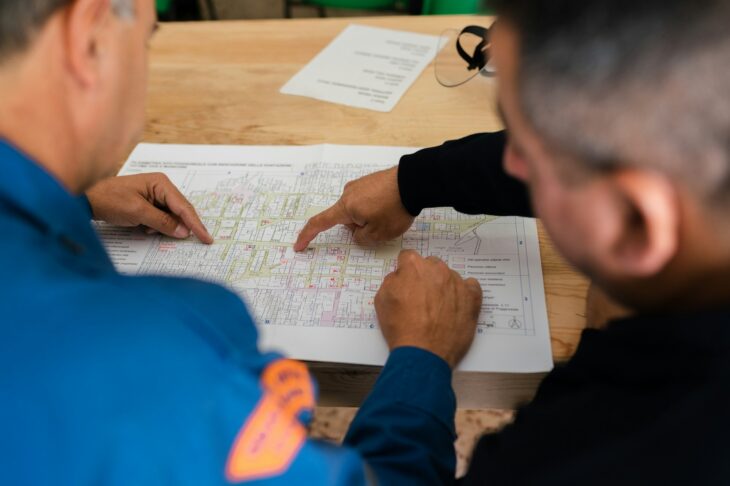
Life Safety Compliance: Common Mistakes and How to Avoid Them
When it comes to life safety compliance, there’s no room for error. Whether you’re managing a building, a business, or just trying to keep your home safe, understanding the basics can mean the difference between life and death. Let’s dive into some of the most common mistakes people make regarding life safety compliance and, more importantly, how to avoid them.
The Importance of Life Safety Compliance
Before we get into the nitty-gritty of what can go wrong, let’s talk about why this matters. Life safety compliance isn’t just a bunch of rules and regulations—it’s about protecting lives. These guidelines are designed to prevent fires, facilitate evacuations, and ensure that, in an emergency, everyone knows what to do and can get out safely.
Ignoring Fire Safety Measures
One of the most common mistakes in life safety compliance is neglecting fire safety measures. This can range from not having enough fire extinguishers to failing to maintain fire alarms.
What You Can Do
- Regular Maintenance – Make sure all fire alarms and sprinklers are regularly tested and maintained. It’s not enough to install them; they need to be in working order.
- Proper Placement – Fire extinguishers should be placed in easily accessible locations and should be checked annually.
- Employee Training – If you run a business, ensure that all employees are trained in fire safety procedures, including how to use fire extinguishers and where to find exits.
Blocking Emergency Exits
You’d be surprised how often emergency exits are blocked. Whether it’s because of misplaced furniture, storage items, or just plain neglect, this is a serious hazard.
Keep Exits Clear
- Regular Inspections – Schedule regular inspections to ensure all exits are free of obstructions.
- Clear Signage – Make sure all emergency exits are clearly marked and visible.
- Policy Enforcement – Enforce a strict policy against blocking exits. This is non-negotiable.
Overlooking Electrical Safety
Electrical fires are a common cause of emergencies, and they can often be prevented with a bit of vigilance.
Electrical Safety Tips
- Regular Inspections – Have a qualified electrician inspect your wiring regularly.
- Avoid Overloading Circuits – Don’t overload power outlets or circuits. Use surge protectors where necessary.
- Report Issues – Encourage employees or family members to report any electrical issues immediately.
Inadequate Emergency Plans
An emergency plan is useless if it’s not well thought out or practiced. Many places have plans that are either outdated or not practiced regularly.
Developing and Practicing Emergency Plans
- Tailor Your Plan – Make sure your emergency plan is specific to your building or business.
- Regular Drills – Conduct regular drills to ensure everyone knows what to do in an emergency.
- Update Routinely – Review and update your emergency plan at least once a year or whenever significant changes are made to the building layout or occupancy.
Poor Communication
In an emergency, communication is key. If people don’t know what’s happening or what they should do, panic can set in quickly.
Ensuring Effective Communication
- Clear Instructions – Make sure your emergency plans include clear instructions on how to communicate during an emergency.
- Use Technology – Consider using mass notification systems to alert people quickly.
- Designated Roles – Assign specific roles to individuals to manage communication during an emergency.
Skipping Regular Training
Training isn’t just a one-time thing. Regular training sessions are crucial to ensure everyone is up to date with the latest safety protocols.
Importance of Ongoing Training
- Keep It Fresh – Regularly update training materials to reflect any changes in safety protocols.
- Engaging Sessions – Make training sessions engaging and interactive to ensure better retention.
- Feedback Mechanism – Implement a feedback mechanism to continually improve training programs.
Common Mistakes at a Glance
Let’s do a quick recap of the common mistakes and how to avoid them:
- Neglecting fire safety – Maintain and regularly check all fire safety equipment.
- Blocking emergency exits – Keep all exits clear and regularly inspect them.
- Ignoring electrical safety – Have regular electrical inspections and avoid overloading circuits.
- Inadequate emergency plans – Develop, practice, and update your emergency plans routinely.
- Poor communication – Ensure clear communication plans and use technology to your advantage.
- Skipping regular training – Conduct ongoing training sessions and keep them engaging.
Final Thoughts
Life safety compliance is crucial and not something to be taken lightly. By understanding common mistakes and implementing measures to avoid them, you can create a safer environment for everyone. Remember, it’s about being proactive, staying vigilant, and making safety a top priority.
Now that you’re armed with this knowledge, take a look around your environment—whether it’s your home, office, or another building—and see where you can improve. Safety doesn’t happen by accident; it’s the result of careful planning and ongoing effort.

